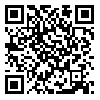Tue, Dec 23, 2025
Volume 16, Issue 1 (Winter 2026)
PTJ 2026, 16(1): 1-4 |
Back to browse issues page
Download citation:
BibTeX | RIS | EndNote | Medlars | ProCite | Reference Manager | RefWorks
Send citation to:



BibTeX | RIS | EndNote | Medlars | ProCite | Reference Manager | RefWorks
Send citation to:
Yousefian Molla R. Reevaluating the Role of Upper Limb Swing in Human Gait: Implications for Clinical Biomechanics. PTJ 2026; 16 (1) :1-4
URL: http://ptj.uswr.ac.ir/article-1-808-en.html
URL: http://ptj.uswr.ac.ir/article-1-808-en.html
Department of Physical Education and Sport Sciences, CT.C., Islamic Azad University, Tehran, Iran.
Abstract: (576 Views)
Human gait is a remarkably intricate process that integrates neural control, musculoskeletal dynamics, and biomechanical coordination. Historically, gait analysis has focused predominantly on lower limb mechanics, with much of the emphasis placed on stride length, cadence, joint kinetics, and energy expenditure in the legs. However, this lower limb-centric perspective overlooks the critical role of upper limb movement—specifically, arm swing—in the regulation of dynamic stability and locomotor efficiency.
Type of Study: Editorial |
Subject:
Sports biomechanics
Received: 2025/08/7 | Accepted: 2025/09/15 | Published: 2026/01/1
Received: 2025/08/7 | Accepted: 2025/09/15 | Published: 2026/01/1
Send email to the article author
| Rights and permissions | |
 |
This work is licensed under a Creative Commons Attribution-NonCommercial 4.0 International License. |






